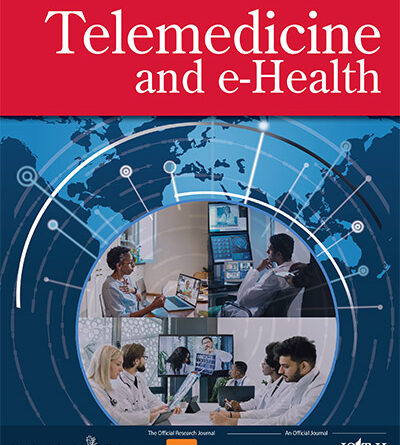The Heat Is On and the Dominoes Fall
Records for athletics, weather, or submissions to this journal are like dominoes. They continue to fall by the wayside. As of this writing, the USA Women’s National Soccer Team is poised to make a three-peat in the Fédération Internationale de Football Association Cup and the temperatures across most of the United States are setting records at an alarming rate, many reaching 100+°F. Even the ocean temperature off the coast of Florida is over 100°F. In addition, the number of submissions to this journal continues to grow with telemedicine and telehealth as search terms in PubMed now in excess of 57,000 and 63,000, respectively.
Excessive heat has consequences; research shows that heat-related injury and death occur. Chambers et al. report on illness and death in Arizona along the border with Mexico.1 While it may be intuitive that shade is helpful, Turner et al. discuss shade as an essential solution in hotter cities.2 With the rise in temperatures just in 2023 alone, there are over 360 manuscripts cited on PubMed using the terms “human health and hot weather.” Hotter temperatures lead to more heat-related injuries and, of course, technologists look for solutions. Kalasin et al. in their 2021 manuscript discuss using artificial intelligence and wearable sensing clothing.3 Pham et al. also discuss wearable sensors in extreme heat.4 Each of these innovations can be linked via telemedicine.
You do not have to be a rocket scientist to understand the extreme weather patterns and their impact on health. I recall living in Houston in the early 1990s. A colleague commented that there were two seasons in Texas—summer and July and August. Oppressive heat makes it difficult to do much outdoors! So as records are shattered across the world, and we see the impact of it as well as the declining impact of COVID-19, we also see new opportunities to (1) develop innovative ways of doing things, and (2) embracing the immense capability that telemedicine and telehealth bring.
As I think of the idea “the heat is on,” I am reminded of the theme song of the same name from the film Beverly Hills Cop recorded by Glenn Fry and written by Harold Faltermeyer and Keith Forsey.5 The lyrics include “the heat is on” as a bridge between chorus. The record setting summer is testament to that!
Why dominoes? Well in health care, there is the “domino effect of medical error.” An error can be exacerbated across the entire spectrum of a system.6 The effect, measured in excess of one billion dollars, can be mitigated to some degree by integrating new approaches. Electronic medical records, telemedicine, telehealth, and other forms of e-Health are prime examples. While not the panacea for completely eliminating medical errors, they can and have made significant impact.
We see the wild fires around the world and the resultant poor air quality, the torrential downpours, and wild temperature swings and their impact on human health and the health of the environment. Our human-driven ecosystems are changing at an accelerated rate, and our objective now is to work to minimize our human footprint. Seeing patients remotely is one possibility. We have already seen manuscripts in this journal on the reduction in the carbon footprints and being greener.7,8
So the ambient heat will decline in the coming months as winter approaches, but the heat is still on, and all of us have to do something about it.
What Is In This Issue
This issue has two excellent reviewers on how digital health in low- and middle-income countries and chronic pain. There are seven manuscripts on COVID-19, and the countries represented include China, Denmark, Indonesia, Italy, Portugal, South Korea, Turkey, and the United States. The manuscript by Harjui et al. discusses state-specific variations in Medicare utilization during the pandemic. The case study by Goldwater et al. lays out a concept of a national telehealth data warehouse. Each of the manuscripts in this issues continues to showcase the importance, efficacy, and utility of telemedicine and telehealth in managing health in a wide variety of disciplines.
REFERENCES
- 1. The contribution of physical exertion to heat-related illness and death in the Arizona borderlands. Spat Spatiotemporal Epidemiol 2023;46:100590; doi:
10.1016/j.sste.2023.100590 . Crossref, Medline, Google Scholar - 2. . Shade is an essential solution for hotter cities. Nature 2023;619(7971):694–697; doi:
10.1038/d41586-023-02311-3 . Crossref, Medline, Google Scholar - 3. . Satellite-based sensor for environmental heat-stress sweat creatinine monitoring: The remote artificial intelligence-assisted epidermal wearable sensing for health evaluation. ACS Biomater Sci Eng 2021;7(1):322–334; doi:
10.1021/acsbiomaterials.0c01459 . Crossref, Medline, Google Scholar - 4. Wearable sensor system to monitor physical activity and the physiological effects of heat exposure. Sensors (Basel) 2020;20(3):855; doi:
10.3390/s20030855 . Crossref, Medline, Google Scholar - 5. “The Heat is On,” written by Faltermeyer H and Forsey K. Beverly Hills Cop: Original Motion Picture Soundtrack, Track 6. Vinyl. MCA Records, December 1984. Google Scholar
- 6. . The domino effect of medical errors. Am J Med Qual 2019;34(4):412–413; doi:
10.1177/1062860618813735 . Crossref, Medline, Google Scholar - 7. The impact of telemedicine on greenhouse gas emissions at an academic health science center in Canada. Telemed J E Health 2010;16(9):973–976; doi:
10.1089/tmj.2010.0057 . Link, Google Scholar - 8. Telemedicine can make healthcare greener. Telemed J E Health 2010;16(2):229–232; doi:
10.1089/tmj.2009.0105 . Link, Google Scholar


